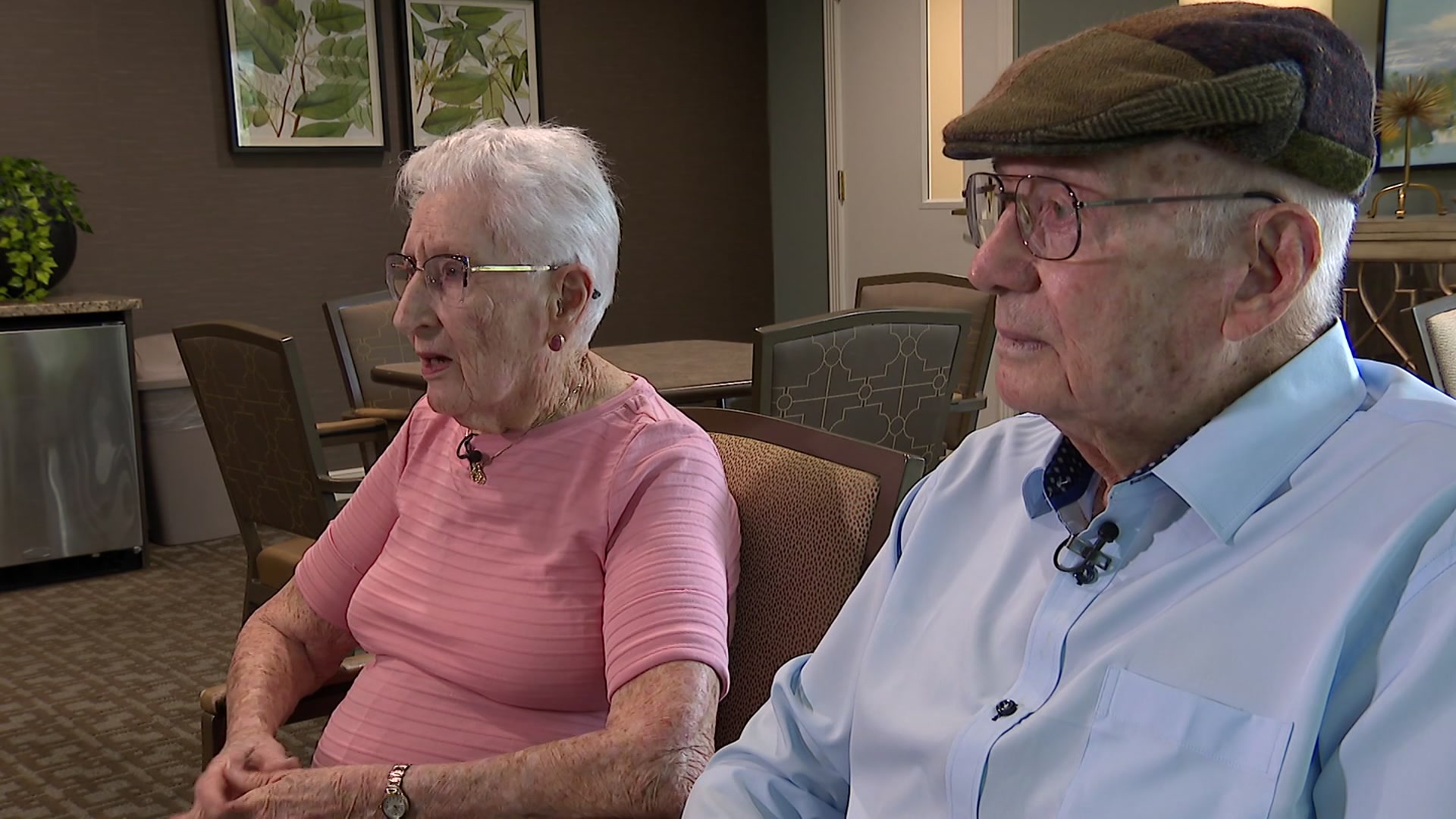EDITOR'S NOTE: Before Virginia Tech and Columbine, Sandy Hook, Aurora and Orlando, there was the University of Texas tower shooting.
It was shortly before noon on a sweltering Monday morning, Aug. 1, 1966, when architectural engineering student and Marine-trained sniper Charles Whitman climbed to the observation deck of the 27-story clock tower in the heart of UT's flagship Austin campus, armed with rifles, pistols and a sawed-off shotgun.
He killed 13 people and wounded more than 30 others before authorities gunned him down. He had killed his wife and mother prior to heading to the tower, one victim died in the hospital a week later and medical examiners eventually attributed a 17th death to Whitman in 2001 -- a man who had been shot and wounded in his one functioning kidney and elected to stop dialysis treatment.
The killing spree introduced the nation to the concept of a "mass shooting" outside the context of a military battlefield, coining a phrase in American lexicon that's become chillingly commonplace. Dozens of times since Whitman, a lone gunman has claimed large numbers of victims in single shooting incidents.
Five decades after its original publication, The Associated Press is making available a version of its story, written by AP newsman Garth Jones.
A young student and scoutmaster, firing with a Marine sniper's cold and deadly accuracy, killed 13 persons Monday from high in the University of Texas tower after slaying his wife and mother with knife and gun.
In an hour and a half of terror in the Texas capital, he also wounded 31 persons.
Local
The latest news from around North Texas.
Two policemen ended the carnage by climbing to a platform above the sniper, Charles Joseph Whitman, 24, and killing him with six shots from a revolver and two blasts from a shotgun loaded with deer slugs.
Counting the sniper, the dead totaled 15. A sixteenth victim was the unborn child of a woman who was wounded. She was in her eighth month of pregnancy.
Police said Whitman left notes near the bodies of his wife and mother, slain separately in their homes.
The notes told of depression, repressed violence and severe headaches. Police said Whitman wrote that he was killing the women to spare them embarrassment over what he was about to do.
The mother was shot and stabbed to death in her fifth-floor luxury apartment near the campus. The 23-year-old wife was stabbed in the Whitmans' small duplex home.
Detective Lt. Merle K. Wells said the notes left in each place were different. He declined to release all of their contents.
Giving partial quotations, however, police said Whitman's notes told of "hating his father with a mortal passion." The notes also said his mother "gave the best 25 years of her life to that man."
Whitman's mother and father were separated about five months ago. The father, C.A. Whitman, lives in Lake Worth, Fla.
Shooting and darting from side to side in the heights of the tower, Whitman kept officers at bay. They fired at him with rifles equipped with telescopic sights but could not pin him down.
Meanwhile, deadly shots from Whitman, an ex-Marine who qualified as a sharpshooter, dropped students and workers as far as two blocks from the tower.
Ramiro Martinez, 29, an off-duty policeman, heard what was going on, left his steak on the fire, jumped into uniform and rushed to the campus.
On his own, Martinez crawled and ran to the main entrance of the building, where he handed a rifle to Allen Crum, an employee of the university cooperative store. The two men made their way to the observation deck. As Martinez rounded a corner and saw Whitman, Martinez fired and Whitman returned one shot. Martinez emptied his revolver at Whitman.
Then officer George McCoy, 26, who had followed Martinez and Crum rushed onto the platform and emptied his shotgun at Whitman.
One of Martinez's pistol bullets smashed Whitman's rifle and another hit him in the neck. A buckshot pellet from McCoy's shotgun hit Whitman between the eyes from about 25 feet, and police said that was undoubtedly the shot that finished him off.
At one point, police had attempted to maneuver a light airplane near the top of the tower with a sharpshooter aboard. Whitman drove the plane away with rifle fire.
Whitman began shooting from the tower at 11:48 a.m. and was killed at 1:20 p.m.
The tower, a Texas landmark, is a slender, four-sided structure 30 stories tall in the center of campus. It is Austin's tallest building and its upper stories command a view of the entire city and the rolling hills beyond.
The observation section of the tower reaches four stories above the 25th floor. The police said Whitman fired from all sides and all levels of the observation area.
Burst after burst from the sniper's arsenal — three rifles, a shotgun and at least two pistols — poured from the tower, keeping rescuers from the victims scattered about the no-man's land below.
Police crouched behind trees and buildings and answered with volleys from rifles and shotguns.
"It was panicky ... frantic," said Diane Casey, 18, a freshman student.
She and thousands of others on the campus for summer school cringed in terror inside university buildings as Whitman squeezed off his well-aimed shots.
When the shooting began, students and university workers ran out of campus buildings to see what was happening. As bullets rained they dashed for cover, some screaming wildly.
With rescuers pinned down by the unrelenting fire, some victims lay unattended for as long as an hour under the 98-degree sun. Finally armored cars used to haul money were pressed into service as ambulances.
Along the streets bordering the campus people scurried into alleys and hid behind autos and buildings. Police sealed off traffic for blocks as they mounted their siege. Radio stations blared warnings.
"Everybody was running, shouting, `Someone has been shot.' I'm scared," said Mrs. Susan Bradshaw, a university employee.
Police Chief Robert Miles said that until Martinez went into action, there was no specific plan for capturing Whitman.
"In a situation like that," the chief said. "It all depended on independent action by the officers."
He said Martinez was so shaken after his exploit that he was sent back home.
"I'm sure you can understand why," Miles told reporters.
He said Martinez, a five-year police veteran, had passed four bodies on the tower steps on his way up to the platform. Two of them were women — a custodian and a younger woman. The other two were bodies of the children of the younger woman.
University Police Chief A.R. Hamilton said Whitman rode to the observation section on an elevator about 11 a.m.
At 11:48 a.m., university police received a trouble alarm from the tower. Two unarmed security police were sent to the top.
They started up steps from the elevator and heard shots.
"Then they saw three bodies," Hamilton said, and they went no further. "They carry no weapons."
"We told people to stay in their offices ... then we called the police ... I'm not sure whether he killed two visitors or a lady stationed at the top of the tower first."
Hamilton said Whitman was able to get his weapons to the top of the building by hiding them in a footlocker loaded on a cart and pretending to be a serviceman. Besides weapons, the footlocker contained ammunition, food, water and a plastic container of gasoline.
The only reported words of Whitman after he gained his firing perch were to Mrs. Vera Palmer, who works in the observatory.
As she stepped off the elevator, a man in a white shirt said:
"Lady, don't you dare get off this elevator."
Mrs. Palmer rode back down.
The woman she was to relieve, Mrs. Edna Townsley, was later found dead at her post.
Another of the sniper's victims was Associated Press newsman Robert Heard, 36, a rugged ex-Marine officer who decided to follow two Texas State Highway Patrolmen as they ran across an open space toward the tower. A bullet drilled through Heard's left shoulder, smashing him to the hot pavement. Like other wounded, he was taken to city-operated Brackenridge Hospital. "That guy must be an incredible shot," Heard said.
Kenneth Schindewolf, 18, of Houston, a campus visitor, said:
"I got shot at, right close by. I was just dumbfounded ... I flew behind a car. Finally I ran across the street and I could hear bullets hitting the street."



